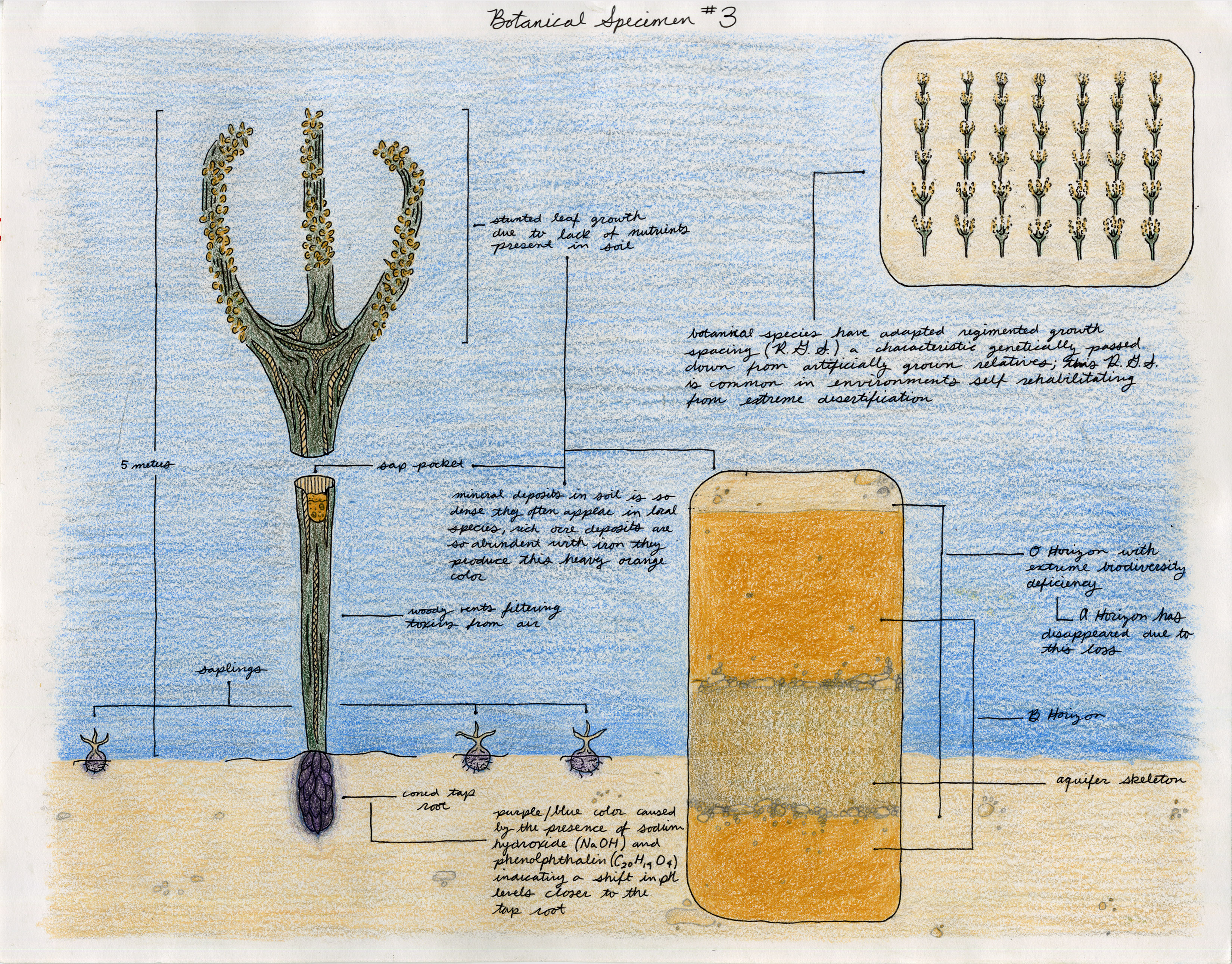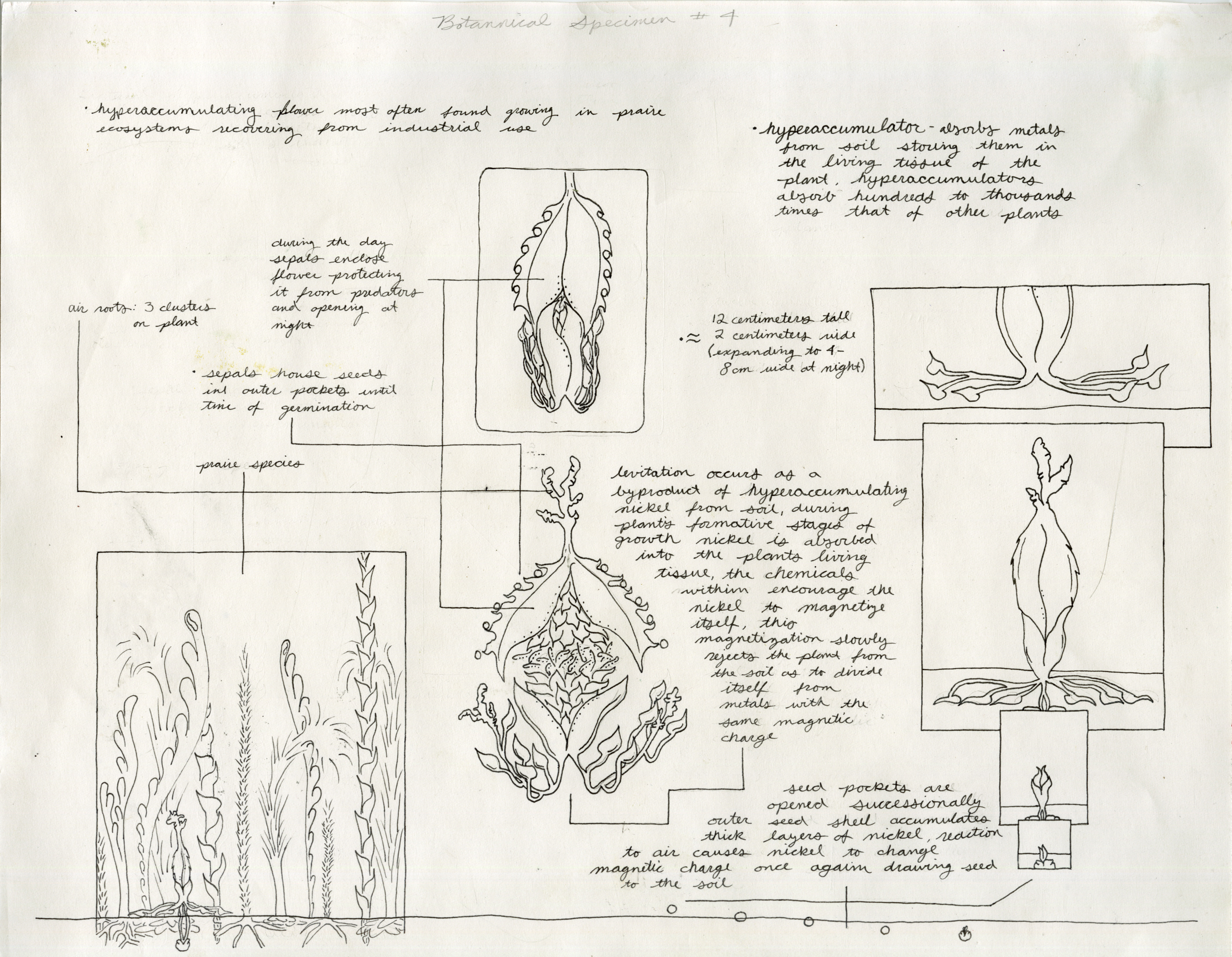

Industrial agriculture has left humans in a difficult position. How do we feed our species while respecting the land we depend on? How has food shaped our relationship with these lands, as well as, the natutral world at large. And to what extent has the continued development of agricultural technologies contributed to our decoupling from the natural world?
Strives toward modern farming techniques like indoor and vertical farming have given answers to some of our problems. Control over growing environments allows us to reduce, and in some cases eliminate, much of the impacts that industrial agriculture has. We are no longer reliant on seasons and weather patterns allowing the growing season to be continual. 'Closed loop systems' like hydroponics and aquaponics implement a recycling of resources in detail that is not seen on an industrial scale. However, does this shift create a new decoupling from the natural world, and can 'closed loop systems' fully exist?
My research and making directly inform one another. I use materiality as a vehicle to visualize my research, while my research often finds its starting point with a chosen material. I consider myself a research based artist using the medium of plants.
I am drawn to processes that require me to slow down and fully engage with my materials. Through this I am forced to critically think about why I a chose a material, what it means to work with this material, and how to honor this material. Working in alternative and craft processes that pull resources from the natural world has pushed me to consider the land these materials are coming from. I am costantly investigating the economic and environmental impacts of my the materials.
Natural pigments are often thought of in realtion to geological biomaterial like ochre. I gravitate towards the natural pigments that plants yield. The transformations that plant materials go through as you break them down and extract their color engages me in the life cycles of plants as a material. How do elements like heat and/or additives effect and change the plant material as well as the resulted pigment material?
I break down my pigment making into three stages: harvesting, processing, and using. Through these three stages I am engaging with different elements of the plant material and its environment.
This stage takes place in a few forms. Sometimes I directly harvesting my chosen plant from the ground, other times I harvest from grocery stores or markets. Thirdly, I often harvest plant scraps from my diet. Each of these harvesting methods evoke different questions and result in different research.
Ground harvesting leads me to think about the impact on the land and the role that particular plant plays in the local ecology. I remind myself not to over harvest because this plant is part of a larger system.
When I source from stores and markets, I am curious how far this material has traveled to get to this place. Where and how was it grown and what practices were used in its production? What impact does this crop have on the local economy as well as the economies of the importing nations? Do this economic benefits outweigh the environmental and/or ethical issues resulting from its production?
When I use plant scraps from my diet, I am thinking about what that plant has provided for me. What minerals and nutrients does that plant have and what impacts do they have on my body? Is supporting the production of this plant worth the positive impact on my being?
Extracting pigment from my harvested plant material. Breaking down a plant from its recognizable state makes me very aware of the life I am taking away. I watch the plant go from lush and full of being to withered and mushed. When I am working with root material sometimes I watch new roots sprout as I am waiting inbetween steps. Watching these changes makes me questions why I have chosen to work with this life and how I can honor it.




The main difference between the two is dyes are soluble while pigments are insoluble. The colorant particles in dyes are much smaller than those in pigments allowing them to dissolve in liquid, pigment particle are larger meaning they suspend instead of dissolve. This results in a different interaction with materials. Dyes become chemically part of the material, whole pigments rest on top of the material.
at large:
two plates of like metals positioned parallel to one another submerged in a electrolyte solution with a supply of direct current
a closer look:
The electrolyte solution, salt water, allows the current to pass freely between two plates, if the plates are of different metals this action will fail to take place. The two metal plates, one of which is your etching plate, have opposite polarities. Your etching plate gets adhered to a metal hanger together making the positive anode. The other plate, a negative cathode, is a perforated sheet of the same metal, the perforation is nessecary for the current to pass between the two plates. Electrolytes consist of positive metal ions and negative sulfate ions. With a direct current these electrolyte ions are encouraged to adhere to the metal plate of opposite polarity. Once attracted, the ions react with the exposed metal of their partnering plate beginning a process of oxidizing. The negative sulfate ions will eat away at the scribed marks on your etching plate, while the positive metal ions will snack on the perforated cathode.
The time and consideration etching asks of the printer is what attracts me to this process. Electro-etching offers me all the things I love about traditional etching while allowing the process to be re-contextualized to contemporary practices.
Please do your research before using this process, there are measures that need to be taken to ensure safe practices. I have hyperlinked the article that helped me understand the fundamentals in the heading of this section.
WARNING: 10 VOLTS OF ELECTRICITY WILL ALLOW HYDROGEN TO FORM ON THE CATHODE AND OXYGEN ON THE ANODE MAKING THE POTENTIAL FOR AN EXPLOSIVE REACTION.

* tank made in collaboration with Danny Miller, former head of SAIC Printmedia Department *
Yellow Burdock or Rumex crispus is a very common invasive species native to Northern Europe. It is part of the Polygonaceae or buckwheat family
and has many uses. Medicinally dock treats digestive issues, liver diseases, and skin irritations.
Dock has small amounts of anthraquinone glycosides
which is an effective laxative when used in large quantities. Dock is also referred to as a cholagogue because it can trigger a reflux of bile and digestive fluids. Nutritiously, dock holds vitamin C, iron, calcium, and phosphorus.
There are many dock recipes including teas, stews, syrup, and more.


Transportation of Yellow Burdock
from left to right: Yellow Burdock Root Cross-section #1, Yellow Burdock Leaf Specimen #2, Yellow Burdock Leaf Specimen #1, Yellow Burdock Leaf Specimen #3, Yellow Burdock Root View #25
individual screen prints with Yellow Burdock root and leaf pigments, pencil on rice paper
combined size 351/2 x 14 inches
fictional field / botanical studies (work in progress)
illustrations, electro-etchings, copper etching plates








